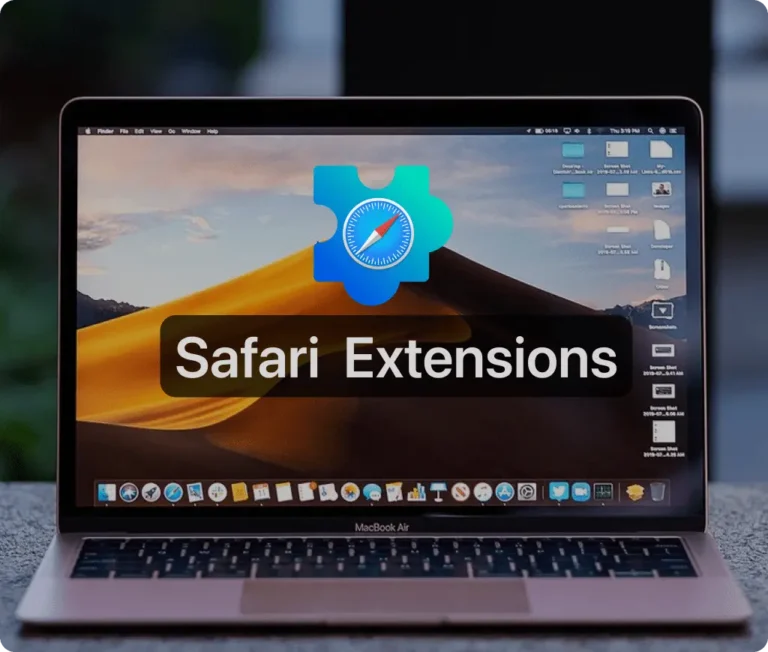
Safari extensions are a powerful tool for enhancing the functionality of the Safari browser on both macOS and iOS devices. They provide customized browsing experiences, content management, and integration with various services. This guide will walk you through the process of enabling Safari extensions across different devices, ensuring you make the most out of your Safari browser.
Installing Safari Extensions on macOS
To begin using Safari extensions on a Mac, you must first download them from the Mac App Store, which ensures that they are Apple-reviewed and automatically updated for security and performance. Here’s how you can install and enable them:
- Update Safari: Ensure your Safari browser is updated to version 12 or later to access the latest extensions available in the App Store.
- Access Extensions: Open Safari and select Safari > Safari Extensions from the menu bar. This action opens the App Store to the Safari Extensions page.
- Installation: Choose an extension by clicking Get or the price button. Sign in with your Apple ID if prompted and click Install. After installation, the extension may need to be opened to configure initial settings.
- Enable the Extension: Go to Safari > Preferences > Extensions. Check the box next to the extension you wish to enable to activate it. This step is crucial as installing an extension does not automatically enable it.
Managing Safari Extensions
Managing your extensions is straightforward. You can turn them off, adjust their settings, or uninstall them if they are no longer needed:
- Turning Off: To disable an extension temporarily, uncheck the box next to the extension’s name under Safari > Preferences > Extensions.
- Uninstalling: If you decide an extension is unnecessary, you can uninstall it by selecting it and clicking the Uninstall button. This helps keep your browser optimized by removing unused or unwanted extensions.
- Adjust Settings: For extensions that require specific permissions or need to be adjusted, select the extension and modify the settings as required. This feature is particularly useful for managing how extensions interact with websites.
Using Safari Extensions on iOS
Enabling extensions on iOS devices follows a similar process but is tailored to the mobile experience:
- Download Extensions: Install Safari extensions from the iOS App Store. After downloading, navigate to Settings > Safari > Extensions to manage your extensions.
- Enable and Manage Permissions: In Safari, use the AA icon in the URL bar to manage site-specific settings for extensions, such as content blockers. You can toggle these settings on or off depending on your needs for each site.
Cross-Device Extension Sharing
With macOS Ventura, iOS 16, and iPadOS 16 and later, Apple allows users to share extensions across all their devices. This means if you enable an extension on your Mac, you can also have it available on your iPhone or iPad, provided the extension is compatible across these platforms.
Conclusion
Safari extensions are an excellent way to enhance your browsing experience by adding functionality tailored to your needs. Whether you’re using a Mac, iPhone, or iPad, the process of installing, enabling, and managing Safari extensions is designed to be user-friendly and secure. By following these steps, you can efficiently utilize Safari extensions to maximize your productivity and browsing efficiency.
Other Must-Have Safari Extensions
There are several other Safari extensions that can significantly enhance your browsing experience. Here are a few worth checking out:
- What Font for Safari: Easily identify web fonts on any page. Check the App Store and read more in this article.
- Color Sense: A top-notch color picker tool for designers. Check the App Store and read more in this article.
- Window Resizer for Safari: Simplifies resizing your browser windows. Check the App Store and read more in this article.
- Enable Right Click: Restores the ability to right-click and copy content on protected websites. Check the App Store and read more in this article.
- Shade View Dark Mode: Automatically apply dark mode to any website. Check the App Store and read more in this article.
- CSS Inspector: Access and inspect CSS elements on any webpage. Check the App Store and read more in this article.
- SVG Picker: View and copy SVG files from websites. Check the App Store and read more in this article.
- Save Image as Type: Save images in your preferred format (PNG, JPG, WebP). Check the App Store and read more in this article.
- Page Ruler for Safari: Measure webpage elements with precision. Check the App Store and read more in this article.
- Auto Scroll and Read: Automatically scroll websites. Check the App Store and read more in this article.
- Auto Scroll and Find: Automatically scroll while searching for specific text. Check the App Store and read more in this article.
- Lorem Ipsum for Safari: Generate placeholder text with just a click. Check the App Store and read more in this article.
- Porn Blocker for Safari: Boost your focus by blocking adult content. Check the App Store and read more in this article.
- Focus Boost for Safari: Improve your productivity by minimizing distractions. Check the App Store and read more in this article.
- Highlight Text for Safari: Highlight and save Text. Check the App Store and read more in this article.
- Web Paint for Safari: Draw, Paint, Annotate, and take screenshots directly in Safari. Check the App Store and read more in this article.



